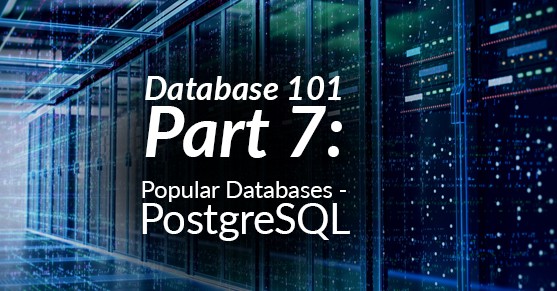Commonly referred to as “Postgres,” PostgreSQL is a free open source object-relational database management system (ORDBMS) with an interface for creating fail-safe environments and committed to preserving data integrity. Since its initial release in 1996, Postgres has been a popular database choice for companies supporting various data types (IP, CIDR, XML, JSON, and more). As of 2017, PostgreSQL is used by more than 32,700 companies — primarily in the United States — in the computer software and IT services industry.
Postgres is fully compliant with ACID and ANSI SQL standard and has several attractive features that make it a common database. In addition to its compliance, Postgres works on a variety of different platforms — Linux, Unix, MS Windows, Solaris, OpenBSD, AIX, and others — for users utilizing most major languages and middleware. With concurrency control for multiple versions, migrating from one version to the other, or transferring data between different versions of Postgres is a breeze.
Just like other database platforms, Postgres offers all the features for building optimal environments safely and securely; standby server, log-/trigger-based replication, high availability, and impressive locking mechanisms. As a LAPP stack option, Postgres has vast potential for running complex web applications with dynamic features.
Though it is free, developers of Postgres are dedicated to giving users the full spectrum of a high-quality database without the expenses. Even when it comes to installation and use, the costs are significantly reduced compared to other databases. Installation is as easy as a download, and because it’s easier to learn than more dense databases, training fees are minimal.
There’s a lot of reasons why Postgres has become a popular database. And, whatever your reason is for choosing it, the DBA team at XTIVIA can help you with licensing, maintenance, or any other service you may need with the following versions.
Editions (presented alphabetically, list subject to change at PostgreSQL’s whim):
- PostgreSQL 11.1
- PostgreSQL 10.6
- PostgreSQL 9.6.11
- PostgreSQL 9.5.15
- PostgreSQL 9.4.20
- PostgreSQL 9.3.25
High Availability:
- Point-in-Time-Recovery (PITR)
- Active Standby
Replication:
- Asynchronous Replication
- Synchronous Replication
- Logical Replication
- Pgpool, citus, Postgres-XL
Operating System:
- Linux, Microsoft Windows (2000 SP4 and later), FreeBSD, OpenBSD, NetBSD, AIX, HP-UX, Solaris, Unix, and MacOS X
Cloud:
- Amazon RDS/Aurora/EC2
- Google Cloud SQL
- Microsoft Azure
- EnterpriseDB Cloud
- ElephantSQL
History:
As an offshoot of the Ingres database project at the University of California, Berkeley, the POSTGRES was developed and tested from 1986 to 1988 before its soft release to select users in June of 1989. For five years, students involved with the POSTGRES project continued to improve the query engine, rewrite system rules, and add system support and features until the project ended after the release of version 4.2 in 1994. Later that year, graduate students revived the project by replacing the POSTQUEL query language with SQL, which eventually became PostgreSQL (1996). And since the release of Postgre 6.0, a group of volunteer developers (The PostgreSQL Global Development Group) have maintained upkeep on the software.

